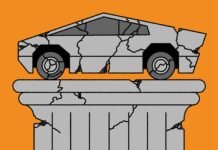Common Causes of Arm Pain and When to See a Chiropractor
Introduction
Your arm hurts. Again.
Maybe it started as a dull ache after a long day at the computer. Or perhaps you woke up with sharp, shooting pain that won’t go away. You’ve tried rest, ice, and over-the-counter painkillers – but nothing seems to work.
Here’s what most people don’t realize: arm pain rarely starts in the arm itself.

The real culprit is often hiding in your neck, spine, or overworked joints. That tingling in your fingers? It could be a pinched nerve in your cervical spine. The persistent elbow pain? Maybe it’s related to your posture at work.
Arm pain affects everything – from typing emails to lifting groceries to hugging your kids. It’s not just uncomfortable. It’s life-limiting.
The good news? Chiropractic care gets to the root of the problem. Instead of masking symptoms with medication, chiropractors identify and treat the underlying cause of your arm pain.
In this article, we’ll walk you through the most common causes of arm pain, explain how chiropractors diagnose the problem, and show you when it’s time to seek professional help. You’ll also discover proven treatment methods that can restore your mobility and get you back to doing what you love – pain-free.
Common Causes of Arm Pain
Understanding what’s causing your arm pain is the first step toward relief. Here are the most common culprits that chiropractors see every day.
Neck-Related Arm Pain (Referred Pain)
Your neck and arms are more connected than you think.
When vertebrae in your cervical spine become misaligned, they can compress nearby nerves. These nerves run from your neck all the way down to your fingertips. The result? Pain that feels like it’s in your arm – but actually starts in your neck.
According to arm pain chiropractors from Northstar Integrated Health in Darien, muscle strain in the neck creates dull, spreading pain in the upper arm or forearm. When a nerve gets pinched, you’ll feel sharp, shooting sensations down your arm. You might also notice numbness, tingling, or weakness in your hand.
This is called referred pain, and it’s one of the most common reasons people seek chiropractic care for arm issues.
Repetitive Strain and Overuse Injuries
Modern life is hard on your arms.
Hours of typing. Endless scrolling on your phone. Repetitive motions at work or during sports. These activities create micro-injuries that build up over time.
Carpal tunnel syndrome happens when the median nerve in your wrist gets compressed. You’ll feel numbness and tingling in your thumb, index, and middle fingers.
Tennis elbow and golfer’s elbow are inflammation conditions affecting the tendons around your elbow. Despite the names, you don’t need to play sports to get them. Any repetitive gripping or twisting motion can trigger these painful conditions.
Tendonitis – inflammation of the tendons – commonly affects the shoulders, elbows, and wrists. It starts gradually and worsens without proper treatment.
Joint Problems
Your arms contain multiple complex joints that take a beating every day.
Osteoarthritis develops when cartilage wears away between bones. While it typically affects weight-bearing joints, the wrists, thumbs, and hands are also vulnerable. You’ll notice stiffness, reduced mobility, and pain that worsens with activity.
Bursitis occurs when small fluid-filled sacs around your joints become inflamed. In the shoulder, it causes pain when lifting your arm. In the elbow, bending and extending becomes painful.
Joint dysfunction in the shoulder, elbow, or wrist can result from previous injuries or chronic strain. When joints don’t move properly, surrounding tissues compensate – leading to pain and limited function.
Injuries and Trauma
Sudden injuries create immediate and obvious pain.
Car accidents are a leading cause of arm pain. The impact can damage your spine, neck, or arm itself. Even after the initial injury heals, lingering pain often requires chiropractic treatment.
Sports injuries – from contact sports, falls, or overexertion – can cause fractures, sprains, and dislocations. Baseball players, tennis players, and painters commonly develop rotator cuff injuries from repetitive overhead movements.
Acute trauma like broken bones or torn ligaments needs immediate medical attention. After emergency care, chiropractic treatment helps restore strength and mobility during recovery.
Poor Posture (Upper Crossed Syndrome)
Your posture is silently sabotaging your arms.
Forward head posture and rounded shoulders put constant strain on your neck and upper back. For every inch your head moves forward, your muscles work twice as hard.
This creates upper crossed syndrome – a pattern of muscle imbalance where some muscles become tight while others weaken. The result? Chronic tension, fatigue, and referred pain shooting down your arms.
If you work at a desk, use your phone frequently, or drive for long hours, you’re at high risk. The good news? Chiropractic care can correct these postural issues before they cause permanent damage.
Chiropractic Treatment Options for Arm Pain
Chiropractors don’t just treat symptoms. They identify the root cause and create a personalized treatment plan to restore your arm function.
Here’s what you can expect.
Spinal Adjustments
Most arm pain starts in the spine.
Spinal adjustments realign your cervical and thoracic vertebrae, relieving pressure on compressed nerves. When your spine is properly aligned, nerve signals flow freely from your neck to your arms and hands.
These precise, controlled movements improve joint mobility and reduce muscle tightness. Many patients feel immediate relief after their first adjustment.
Joint Manipulation
Your chiropractor can adjust more than just your spine.
Shoulder, elbow, and wrist adjustments restore proper joint mechanics. When joints move correctly, inflammation decreases and healing accelerates.
This technique is especially effective for conditions like frozen shoulder, tennis elbow, and wrist dysfunction. Small adjustments create big improvements in your range of motion.
Soft Tissue Therapy
Tight muscles and fascia contribute to arm pain.
Massage therapy releases tension and improves blood circulation to injured areas. Myofascial release targets the connective tissue surrounding your muscles, breaking up adhesions that restrict movement.
Trigger point therapy addresses specific knots in your muscles that refer pain to other areas. By releasing these trigger points, your chiropractor reduces pain throughout your entire arm.
Cold Laser Therapy
Modern technology enhances traditional chiropractic care.
Cold laser therapy uses low-level light to penetrate deep into tissues. It reduces inflammation, accelerates healing, and relieves pain – all without drugs or surgery.
This treatment is particularly effective for tendonitis, bursitis, and joint pain. Sessions are quick, painless, and highly effective.
Stretching and Strengthening Exercises
Long-term relief requires active participation.
Your chiropractor will prescribe specific exercises tailored to your condition. Stretching improves flexibility and reduces tension. Strengthening exercises build muscle support around vulnerable joints.
These exercises prevent future injuries and help you maintain the improvements gained through treatment. Consistency is key.
Posture Correction and Ergonomic Advice
Prevention is just as important as treatment.
Your chiropractor will analyze your daily habits – how you sit, work, sleep, and move. Small adjustments to your workspace setup can eliminate the strain causing your arm pain.
You’ll learn proper lifting techniques, ideal sleeping positions, and how to maintain neutral posture throughout the day. These changes protect your arms from future injury.
Lifestyle Modifications
Healing happens outside the treatment room too.
Your chiropractor may recommend nutritional changes to reduce inflammation. Proper hydration supports tissue health. Stress management techniques prevent muscle tension.
You might need to modify certain activities temporarily while your body heals. Your chiropractor will guide you on what to avoid and when you can safely return to normal activities.
The goal isn’t just pain relief. It’s restoring your full function and preventing recurrence.
Conclusion
Arm pain doesn’t have to control your life.
Whether you’re dealing with referred pain from your neck, repetitive strain injuries, or joint dysfunction, chiropractic care offers a proven solution. Unlike medications that mask symptoms, chiropractors address the root cause of your discomfort.
The key is taking action early. Don’t wait until simple tasks become impossible.
If you’ve been living with arm pain for more than a few days, experiencing numbness or tingling, or finding it harder to do everyday activities – it’s time to see a chiropractor. A thorough examination will identify exactly what’s causing your pain and create a treatment plan tailored to your needs.
Your arms deserve to work pain-free. With the right care, you can return to typing, lifting, playing sports, and enjoying life without constant discomfort.
Take the first step today. Schedule a consultation with a qualified chiropractor and start your journey toward lasting relief.






























